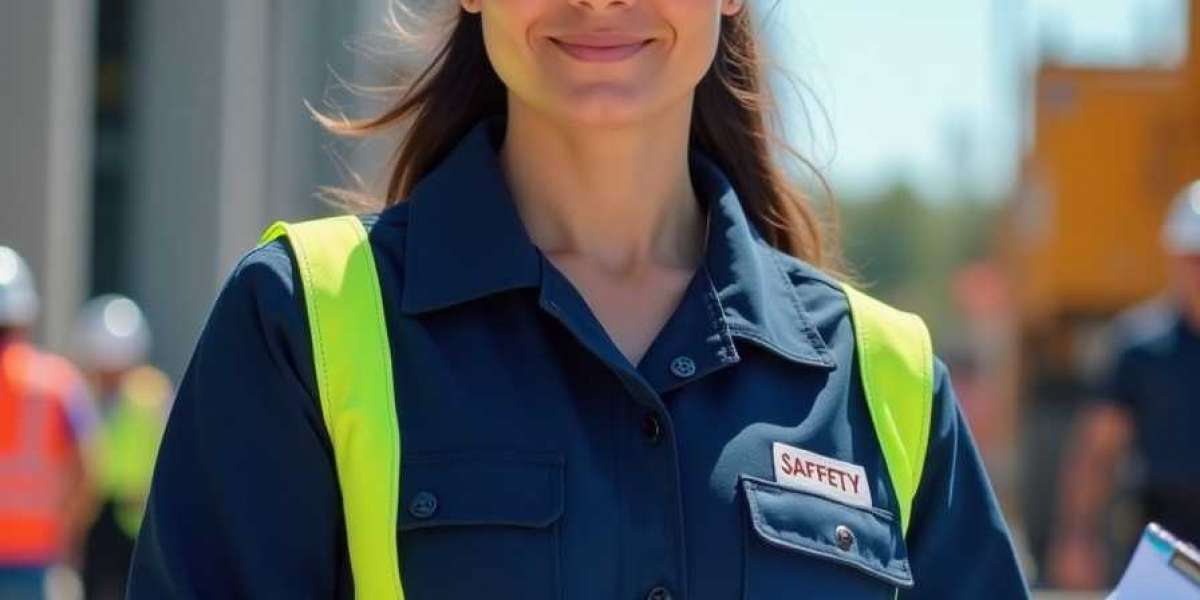In every workplace where high-risk tasks are performed, there’s a crucial system designed to ensure safety: the permit to work system. This system isn’t just about permission—it’s about control, preparation, and clear communication. One critical aspect that often doesn’t get the attention it deserves is how emergency plans are tied to these permits.
Imagine a scenario where a technician is working inside a confined space, such as a tank. Suddenly, there's a gas leak. Without a plan, panic sets in, precious time is lost, and lives may be at risk. This is where well-prepared emergency procedures linked to permit to work activities become lifesaving tools rather than just paperwork.
Before we dive into the core of linking emergency plans, it's important to note that many professionals in Pakistan enhance their knowledge through formal education like the Safety Officer Course in Pakistan, which emphasizes the importance of integrating emergency response into safety systems. These training programs prepare individuals to handle real-life incidents with skill and confidence.
Why Emergency Plans Matter with Permit to Work
A permit to work (PTW) system is more than just a checklist. It’s a formal process that authorizes and controls specific jobs that are potentially dangerous. Think of tasks like hot work, electrical repairs, or working at height. These aren’t everyday jobs—they come with real risks.
Now, imagine doing these tasks without having a plan for emergencies. It’s like going mountain climbing without a rope. Emergency plans ensure that if something does go wrong, everyone knows exactly what to do—no confusion, no delays.
Let’s break this down further.
Key Emergency Scenarios to Plan For
1. Fire and Explosion
This is one of the most common hazards, especially during hot work like welding or grinding. In such cases, the PTW should be linked to:
- Fire evacuation procedures
- Location of fire extinguishers
- Coordination with on-site firefighting teams
- Shutdown procedures for equipment and fuel sources
A real-life example comes from a construction site where hot work was being done near a flammable storage area. The PTW did not link to an emergency plan. A spark led to a fire, and the lack of immediate response resulted in injuries and property loss. After the incident, the company learned the hard way to always link PTWs with emergency evacuation routes and fire response protocols.
2. Chemical Spills
Tasks involving chemicals are extremely risky. If a spill happens, people need to act fast. The PTW should highlight:
- Spill containment plans
- PPE requirements
- Emergency showers and eye wash stations
- Nearby exits and assembly points
In chemical plants, even a small spill can cause harmful reactions or inhalation injuries. An emergency plan should never be generic—it should be task-specific.
3. Confined Space Rescue
Working in confined spaces is a common permit-based task. These jobs are dangerous due to the risk of suffocation, toxic gas exposure, or entrapment. Emergency planning for this must include:
- Rescue equipment availability
- On-standby trained rescue personnel
- Communication tools (e.g., radios, alarms)
- Ventilation systems and gas monitoring
There’s a powerful lesson from a manufacturing plant where a worker became unconscious due to gas buildup inside a tank. The permit had no rescue plan attached. It took 20 minutes before emergency services arrived. Had a confined space rescue team been ready on-site, the outcome might have been very different.
4. Electrical Accidents
Permits related to electrical work must account for:
- Isolation procedures (lockout/tagout)
- Emergency shut-off switches
- CPR-trained staff
- Immediate contact info for medical help
Electrical shock can lead to cardiac arrest in seconds. A clear, linked emergency plan ensures that help arrives within that critical window.
5. Working at Heights
This job often requires a permit, and rightly so. Falls from heights are one of the leading causes of workplace fatalities. Emergency preparedness includes:
- Fall arrest recovery techniques
- Use of mobile rescue platforms
- Training for fellow workers to assist safely
- First-aid stations within reach
Just last year, a technician fell from scaffolding during maintenance. Though wearing a harness, he dangled for several minutes because there was no fall recovery plan in place. Linking a rescue plan with the PTW could have cut down the response time.
Step-by-Step Guide: Linking Emergency Plans with PTWs
Step 1: Identify the Hazards
Before issuing the permit, assess the full range of risks. Ask questions like:
- What could go wrong?
- What emergencies might arise?
Step 2: Choose the Right Emergency Response Plan
Not every job needs the same plan. Tailor your emergency procedures to the task. For example, hot work needs fire control measures, not chemical spill kits.
Step 3: Communicate Clearly
Make sure everyone involved in the job knows:
- What the emergency plan is
- Where to go
- Who to call
- What equipment is nearby
This can be done during toolbox talks before the shift.
Step 4: Drill and Train
Even the best emergency plan fails if no one knows how to use it. Training is crucial. This is where programs like the Safety Officer Course in Pakistan provide a strong foundation. They prepare professionals to not just write plans but to lead during emergencies.
Step 5: Monitor and Review
During the task, continuously monitor for signs of risk. After completion, review the effectiveness of both the permit and the emergency plan. Did anything go wrong? Could it be improved?
Human Error: A Hidden Factor
Emergency plans often assume people will follow steps perfectly. But humans are emotional and unpredictable, especially during panic. That’s why emergency plans should be simple, direct, and practiced regularly.
An anecdote worth sharing comes from an oil refinery. During an emergency drill, one worker froze and forgot the evacuation route. It wasn’t because he wasn’t trained. The plan was too complex. The company revised the plan, used color-coded signs, and ran more realistic drills. During the next drill, everyone exited smoothly.
Communication Tools That Help in Emergencies
To make sure emergency plans work when needed, support them with:
- Loud alarms and PA systems
- Two-way radios for on-site teams
- Clear signage for escape routes and emergency gear
- Digital PTW systems that link emergency plans directly with permits
These tools can make a major difference in chaotic moments.
Real-World Integration: Stories That Matter
One factory integrated digital permits with automated alerts. When someone requested a hot work permit, it auto-triggered fire suppression readiness and notified the safety team. This integration saved them time—and possibly lives—during a real fire incident.
Another example comes from a water treatment plant where a worker entered a tank for cleaning. The PTW included a rescue plan that had been practiced weekly. When the worker lost consciousness, the team responded within 3 minutes and saved his life.
These stories highlight that emergency plans shouldn’t just sit in binders. They must live in daily practice, drilled and known by all.
Creating a Safety Culture
Permit to work systems and emergency plans aren’t just for legal compliance. They’re about creating a safety culture where workers feel protected and confident. A culture where safety is everyone’s responsibility—not just the safety officer’s.
That’s why training, like the Safety Officer Course in Pakistan, plays a crucial role. It not only teaches technical knowledge but builds leadership and decision-making skills under pressure.
Read more about how to build strong safety culture with a practical Safety Course in Pakistan that aligns with your industry needs.
Conclusion
In workplaces where high-risk tasks are routine, the permit to work system is essential. But a permit without a linked emergency plan is only half the protection. Whether it’s a fire, fall, chemical leak, or electric shock, the difference between survival and tragedy often lies in how well-prepared your emergency response is.
So, don’t treat emergency planning as an afterthought. Integrate it deeply with every permit. Train your teams. Practice the response. Learn from past incidents. And most importantly, take action before an emergency—not after.
By doing so, you create a workplace where people are not just working—they’re working safe.








